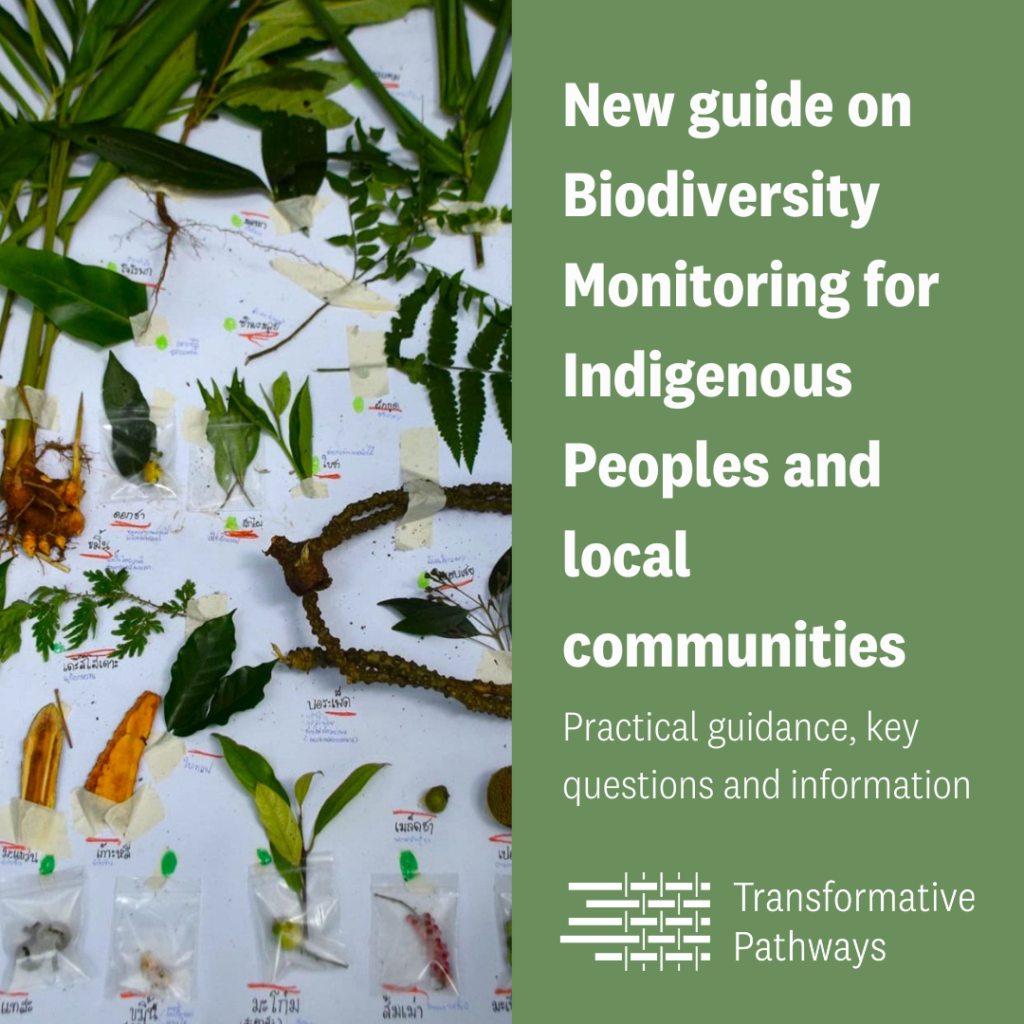University of Oxford
11a Mansfield Rd
OX1 3SZ
UK

In the face of escalating biodiversity loss and the urgent need for sustainable conservation practices, the role of Indigenous Peoples and local communities (IPs & LCs) has never been more critical. To ensure that their actions are recognised and supported in national and international policy, a new guide offers a resource to support IPs and LCs in using new and innovative biodiversity monitoring techniques.
Indigenous Peoples and Local Communities have been monitoring the biodiversity on their lands since time immemorial. They have an in-depth understanding of the unique flora and fauna on their territories, as well as the threats that are facing them. However, this knowledge is often held as stories, observations, songs or chants, and is often overlooked in the development of biodiversity policy.
Recognizing this, “Introduction to Community-Based Environmental Monitoring,” offers a new resource for IPs and LCs and those working with them to support new forms of biodiversity monitoring. Produced as part of the Transformative Pathways project, the guide serves as a tool for communities to assert their land rights and participate more actively in conservation dialogues. By generating and managing their own environmental data, communities can strengthen their positions in negotiations with governments and international bodies.

The guide is divided into six distinct stages, each addressing key aspects of establishing and conducting a community-based environmental monitoring programme. These stages are designed to walk the reader through the entire process of monitoring, from initial planning to data collection, analysis, and sharing of results. Here’s a brief overview of the guidance step by step:
- Preparation: This stage focuses on foundational considerations, such as securing funding, assessing community motivations for commitment, and understanding the resources available for monitoring efforts. This foundational stage emphasizes the importance of aligning community interests with the practicalities of monitoring, such as resource allocation and risk assessment. It’s where communities consider the groundwork for sustainable monitoring practices, ensuring that the projects embarked upon are both meaningful and feasible.
- Identifying monitoring priorities: This stage guides the community and supporting organisations in deciding what aspects of biodiversity are most important to monitor, who will use the data, and the motivations behind monitoring activities. This crucial stage helps communities articulate what they value most about their environment and how they can keep track of it effectively. It encourages a prioritization process that is inclusive, ensuring that the monitoring efforts reflect the community’s diverse interests and concerns.
- Developing a participatory monitoring plan: This third stage covers the selection of appropriate monitoring methods and the development of a plan that is participatory and inclusive of community perspectives. Here, the guide dives into the options for combining traditional ecological knowledge with scientific monitoring methods, according to the community’s views on what balance of methods is necessary and desirable. The selection of appropriate methods is key to ensuring that the resulting data are recognized and valued by those who will be using and interpreting them, be it the community themselves, or national and international decision-makers.
- Preparing the monitoring team: Emphasis here is placed on training and capacity building, ensuring that the community has the necessary skills and knowledge to carry out the monitoring effectively. This section focuses on preparing the community’s monitoring team to effectively gather and interpret data, thereby building a knowledgeable team that can carry forward the community’s monitoring goals with confidence and competence.
- Data collection and analysis: Here, the guidance focusses on the practical aspects of collecting and analysing data, emphasizing the importance of accuracy and reliability in monitoring efforts. This stage is critical for ensuring that the insights gained from monitoring activities are valid and can inform both local decision-making and broader conservation strategies where required.
- Community information and sharing of results: Finally, the guidance addresses the importance of communicating findings in a way that engages the community and stakeholders. This final stage highlights strategies for making monitoring results accessible and actionable, reinforcing the community’s role as a pivotal player in conservation decision-making.
Checklists and guiding questions
To ensure that the guide is not only informative but also practical and actionable, each stage is accompanied by checklists and a series of guiding questions, designed to facilitate reflection and discussion within the community and helping to tailor the monitoring programme to the community’s specific needs and context. The checklists serve as a reference to ensure all critical steps are considered and addressed, while the guiding questions provoke deeper thinking about the goals, methods, and implications of the monitoring activities.
By following this approach, communities and their allies will be better equipped with a roadmap for implementing community-based environmental monitoring. This guide aims to make biodiversity monitoring techniques accessible and achievable for communities and their partners worldwide, regardless of their previous experience or technical expertise. It also contains links to resources for further exploration for those wanting to delve deeper into the topic.
Conclusion
The inclusion of community-generated data and indigenous wisdom into national and international policies, such as the Global Biodiversity Framework (GBF), represents a critical step towards more inclusive, equitable, and effective conservation strategies. This guide aims not only to support the conservation of biodiversity but also reinforcement of the rights and territories of IPs & LCs. It acknowledges and incorporates their understanding of their ecosystems, promoting a conservation model that respects and incorporates indigenous knowledge, needs and priorities.

